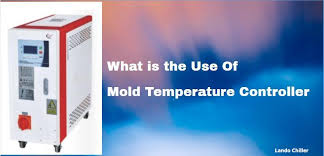In injection molding, the mold temperature controller plays a crucial role in stabilizing process conditions, improving part quality, and extending mold life. However, many manufacturers underestimate one of the most critical factors affecting MTC performance: filtration and water treatment. Studies from US manufacturing plants indicate that nearly 70% of MTC downtime or reduced efficiency is related to poor water quality, scaling, or contamination in the circulation system. This directly impacts productivity, increases maintenance costs, and shortens equipment life. By ensuring proper water filtration and treatment, operators can not only protect their mold temperature controllers but also reduce energy waste and improve system efficiency.
The Role of Filtration in Mold Temperature Controller
Mold temperature controller rely on closed-loop water or oil circuits to regulate mold surface temperature. When using water, impurities such as dust, sand, and fine debris can easily enter the circulation system. These contaminants can accumulate in pipes, pumps, and heat exchangers, restricting flow and reducing heat transfer efficiency. Therefore, manufacturers must install inline filters that capture particles larger than 50 to 100 microns. High-precision systems may require finer filtration, down to 10 microns, depending on the sensitivity of the mold. Without proper filtration, contaminants can cause scaling, pressure drops, and uneven mold temperatures, all of which negatively impact product surface quality and increase cycle times. Filtration isn’t an insignificant add-on feature; it’s a mandatory requirement to ensure every mold temperature controller operates at optimal efficiency.
Required Water Quality Standards for Mold Temperature Controller
Every mold temperature controller has stringent water quality requirements that must be met to ensure long-term reliability. For example, water hardness should typically be maintained below 100 ppm CaCO₃, while pH must be maintained between 7.0 and 8.5 to prevent acidic corrosion and alkaline scaling. Total dissolved solids (TDS) should not exceed 200 ppm to avoid mineral deposits in heat exchangers. Meanwhile, you should keep chloride levels below 50 ppm to prevent pitting corrosion in stainless steel components. In US plants, deviations from these standards can often reduce heat transfer efficiency by up to 30%, forcing operators to run longer cycles and consume more energy. Continuously monitoring water conductivity and hardness ensures that the mold temperature controller maintains thermal stability, reduces wear, and minimizes unplanned downtime.
The Impact of Scale and Corrosion
Scale and corrosion are two of the most destructive issues in any mold temperature controller system. Scale occurs when dissolved minerals (such as calcium and magnesium) precipitate from the water and accumulate on the internal surfaces of pipes and heat exchangers. Even a 1mm thickness of scale can reduce heat transfer efficiency by 10%, leading to increased energy costs and unstable mold temperatures. Corrosion, on the other hand, occurs when untreated water contains oxygen, chlorides, or acidic compounds, which can corrode metal components. This not only shortens the life of the equipment but can also lead to leaks and expensive repairs. Furthermore, by integrating effective filtration and water treatment technologies (such as chemical inhibitors, deionized water, or closed-loop conditioning), manufacturers can reduce the risk of scale and corrosion, thereby protecting productivity and equipment investment.
Filtration and Pretreatment Solutions
To protect every mold temperature controller, companies should implement a combination of mechanical filtration and water pretreatment systems. Mechanical solutions may include mesh filters, cartridge filters, or automatic backwash filters that continuously remove particulate matter from the circulating water. Pretreatment methods such as softening, reverse osmosis (RO), or deionization (DI) can further reduce hardness and dissolved salts. For large US molders, integrating an RO system upstream of the mold temperature controller (MTC) has reduced scale-related downtime by 40% annually. These measures not only protect the temperature controller but also reduce pump strain and extend mold life. A well-designed pretreatment strategy ensures that water entering the mold temperature controller consistently meets recommended specifications and maintains stable performance under continuous operation.
Water Treatment Monitoring and Maintenance Practices
Filtration and treatment systems can only provide consistent results when combined with regular monitoring and preventive maintenance. Operators should perform monthly water quality analysis to check hardness, pH, and total dissolved solids (TDS) levels to ensure compliance with mold temperature controller specifications. Filters must be inspected and replaced at prescribed intervals to prevent clogging and bypass. Conductivity sensors and automated dosing systems can also be integrated to maintain chemical balance and reduce the risk of scaling or bacterial growth. For large retail production sites, predictive maintenance tools such as IoT-based water quality monitoring provide real-time alerts when parameters deviate from target ranges. This proactive approach not only reduces the risk of MTC failure but also ensures energy efficiency, consistent product quality, and compliance with environmental standards.
Protecting Mold Temperature Controllers with Filtration and Water Treatment
For mould temperature controller, filtration and water treatment are not optional but essential for system performance, cost savings, and long-term reliability. By maintaining water quality within specified standards, preventing scaling and corrosion, implementing effective filtration and pretreatment, and establishing consistent monitoring practices, manufacturers can significantly extend equipment life and reduce operating costs.







